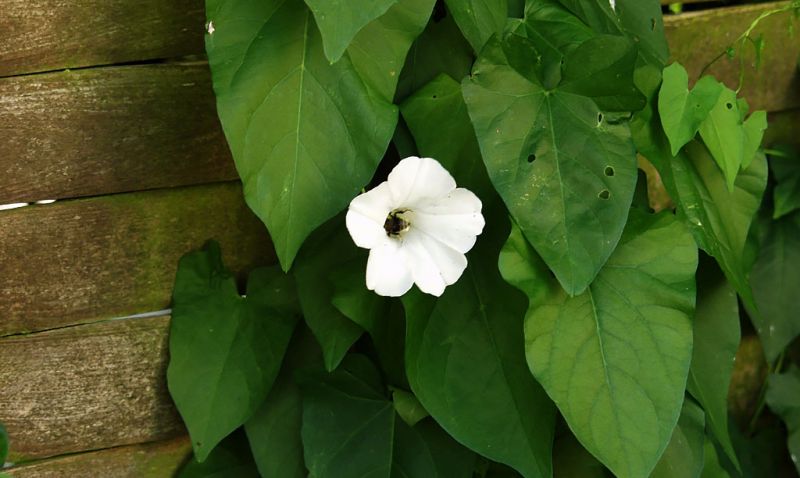Japanese knotweed is confused for many other plants, including clingy bindweed! Find out more about how to tell them apart.

Bindweed characteristics
Japanese knotweed is not the same as bindweed but they look and behave in similar ways. They both have heart-shaped leaves, a strong underground root network, and pop up in the early spring. So it's no wonder that we mix them up! And there are about 250 species of bindweed, some of which are more commonly known as convolvulus, bellbind, hedge bindweed, field bindweed, calystegia sepium, convolvulus arvensis, and more.
However, there are three major ways to tell the difference between bindweed and knotweed, these are:
- Bindweed is a climbing plant, meaning it grows by wrapping its twining stems around nearby plants (and suffocating them), or up and along walls. Japanese knotweed is sturdy enough to stand tall by itself, without support.
- Bindweed flowers in the spring, whereas Japanese knotweed wait until the end of summer to bloom.
- Bindweed flowers look like trumpets and are usually pink or white in colour, however, Japanese knotweed produces clusters of tiny, white flowers.
For all their differences, bindweed can also run rampant, and fast. If you are uncertain which pesky plant is lurking in your garden, or on land to be developed, talk to an invasive weed expert.
Is Bindweed worse than knotweed?
Bindweed and Japanese knotweed are both considered invasive species but which one is worse?
Well, we think Japanese knotweed is the worst weed in the UK today. Not only does it physically compromise your house and garden, but it can get you in trouble with the law, as well as make selling your property a nightmare.
Although bindweed isn't as financially troublesome, it is no 'shy and retiring wallflower' either! In fact, IT IS TOXIC! Bindweed has an alkaline sap which can irritate your skin. It's also danger to animals if consumed. For example, it is known to cause colic in horses.
Removing bindweed from your land
Like Japanese knotweed, bindweed is difficult to remove because most of the plant liked beneath the soil in a complicated root system. Plus, it's nigh impossible to detangle the stems from the plant it clings to.
Herbicide treatment
Also like knotweed, poor attempts to remove it can actually make the bindweed infestation worse by accidentally spreading the plant further afield. Using herbicides is the most effective way to rid your garden of this invasive and toxic plant. Herbicides should either be sprayed or "spotted" onto the weed. Spotting bindweed is less effective than spraying but this method protects surrounding vegetation which is obviously a concern to avid gardeners. Once the bindweed has dehydrated, you should dig out what remains and bit it.
In conclusion, bindweed is not the same as Japanese knotweed but you should still seek to remove it as soon as possible, and if doing so yourself then protective gloves, etc should be worn.
Which weed has worked its way into your garden? For more advice on bindweed, Japanese knotweed or any other invasive plant, contact our friendly, knowledgeable team here at TCM.